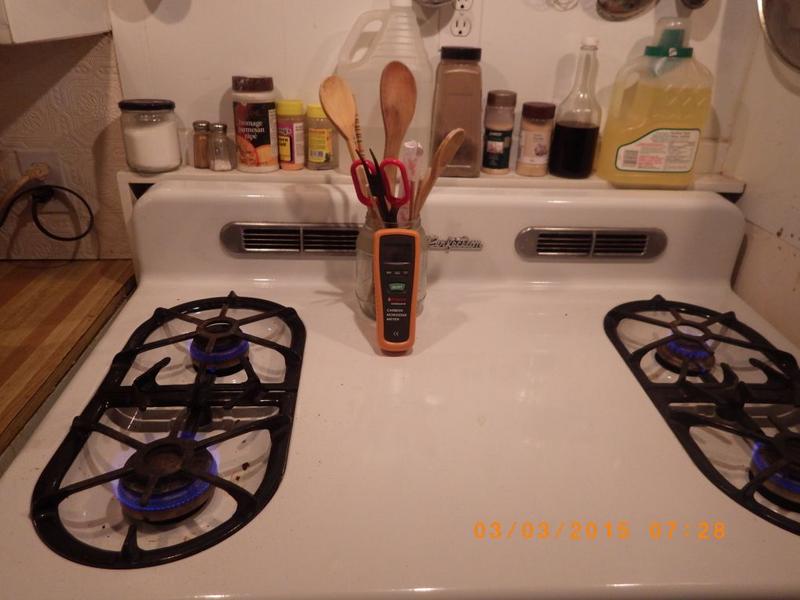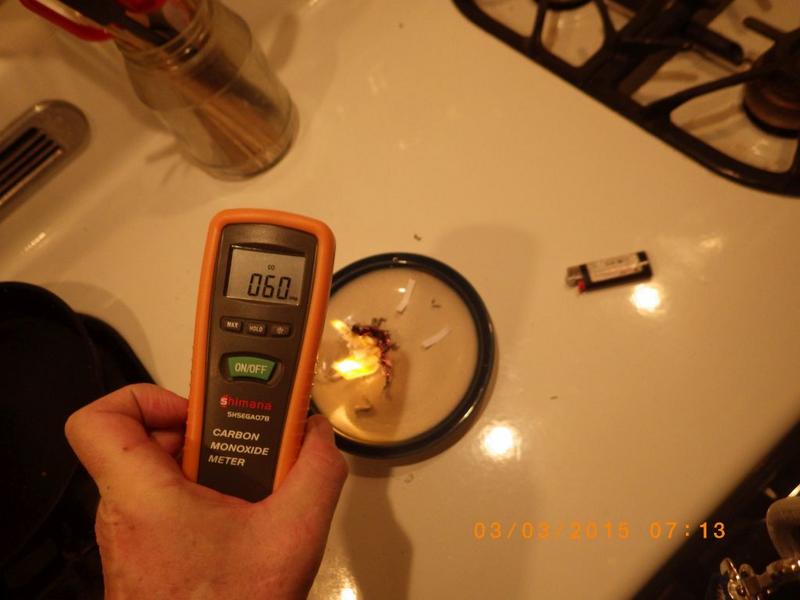Must a natural gas stove in a kitchen be vented? To the exterior?
Yesterday’s reply ](*,)
No…not necessary
May not be required , but always a good idea.
Some people like greasy walls .
2000 IRC G2424.8
The following applainces shall not be required to be vented: 1. ranges
Where the applainces and equipment are installed so that the aggregate input rating exceeds 20 Btu per hour per cubic foot of volume of the room space in which the applaince is installed, one or more shall be provided with a venting system or other approved means for conveying the vent gases to the outdoor atmosphere. etc…
I think we all agree on that Mark.
Now that it is out of the way, do you mention lack of a exterior routed vent?
I always refer to it verbally at the very least, and especially in a small galley kitchen.
Yes, in writting as a safety hazard.
I had to research this today for a project on Wed. I always thought it was no, but found out the city (City of Covington, GA) requires it.
So results will vary from place to place.
So, If I’m reading this correct the answer is YES It does require it… but generally only in a very small kitchen? I personally have a gas range not vented outside. The hood I use has a charcoal filter that works quite well. My range is in a VERY large Kitchen where as the whole main floor is an open concept of 1200 square feet.
Do you replace the charcoal every 3 or 4 weeks?
Hahaha
Have you checked prices on them?
Some come with a little dot that lets you know when to change.
It all depends on use.
That’s what I was getting at…There’s so little charcoal in those filters that 2-3 weeks (or less) of regular use will render its odour absorbtion capability used up…time to replace again @ $15-$25.
The standard thin charcoal filter installed on recirculating range hoods is one of the biggest scams going on in air quality/filtration!!!
I guess really it depends on what you’re cooking… We actually don’t use the stove all that much so they tend to last signifigantly longer although I must say that I am a bit anal about changing it.
I would suggest though, that if someone told me it was a safety issue… I’d like to hear the explanation behind it…
In a small window less kitchen there is more of a chance of carbon monoxide effecting someone.
In general, like I said above , grease , and a charcoal will help kill odor.
The charcoal filter may not be anywhere as good as venting out, but it helps.
Think of all the oils coming out of your food misted on to the walls as it can get that way.
I do lots of Condos, and some of them have no way to be vented out.In a small place you do not want to go without some method of cutting down on the scum which can coat your walls.
Sean,
I write up all ranges that are missing a venting hood. It is not necessary to vent to the exterior. Interior self-ventilators are fine.
FYI: Many gas range manufacturers allow delivery of brand new units emitting CO up to 800ppm
[size=2]Carbon monoxide (CO) concentration in Parts Per Million or as percentage of air
**[size=2]**Parts Per Million [/size]
[size=2]% of CO in air ****[/size]
**[size=2]**Inhalation time and toxic symptoms developed ****
0 - 1 ppm
.0001%
Normal background levels
9 ppm
.0009%
Maximum allowable concentration short term in living area (ASHRAE)
25 ppm
.0025%
Maximum exposure TWA (Time Weighted Average) (ACGIH) in the workplace.****
50 ppm
.005%
Maximum exposure allowed (OSHA) in the workplace.****
200 ppm
.02%
Mild headache, fatigue, nausea and dizziness.
400 ppm
.04%
****Serious headache - other symptoms intensify. ****
Life threatening after 3 hours.
800 ppm
.08%
****Dizziness, nausea and convulsions. Unconscious within 2 hours, dead within 2 to 3 hours.
1600 ppm
.16%
****Headache, dizziness and nausea. ****
Death within 1 - 2 hours.
3200 ppm
.32%
****Headache, dizziness and nausea. ****
Death within 1 hour.
6400 ppm
.64%
Headache, dizziness and nausea.
Death within 25 - 30 minutes.
12,800 ppm
1.28%
****Death within 1 - 3 minutes. ****
Effects can vary significantly based on age, sex, weight and overall health.
[/size][/size]
I just went through this on my own home. A vent to the exterior is required in ca if it has a pilot light. Not if it has electronic ignition.
What do the appliance manufactures say about exterior venting?
Manufactures instruction for gas appliances is for exterior venting, Quwstion which is better Interior, Exterior or Recalculating vents? The average household will produce 4 gallons of grease inside their house. 15% of this is spatter, but 85% of this is vaporized in terms of stains and odors, so proper ventilation is important. Ranges, especially gas, are also more powerful and require better ventilation solutions.
Bottom line
First, do not underutilize what you currently have. Let’s begin with a simple question. Do you usually start cooking, THEN turn on your hood, microwave or downdraft to help remove steam, smoke, and smell? That is completely wrong. You should ALWAYS turn on the hood at least 5 minutes before cooking. This helps move the air and will greatly assist in venting odors.
Let’s discuss cooking patterns. Some people simply boil, others grill. Some use an array of spices, others like to sauté. Some cook for large families, some have professional style gas ranges, while others have the old fashioned coil-top ranges. How you cook and what you cook on really determines your choice of ventilation.
There are 2 ways to vent, internal (recirculation) and external (venting steam and odors to the outside). For external venting, the blower can be internal (inside the hood) or external (outside the house).
Recalculating
Interior venting or recirculation is typically found when using an over-the-range microwave or a less expensive hood. It is also found in many renovation projects where it is impossible to duct to an outside location. Interior vents work with two filters, the main visible filter and then an internal charcoal filter. Interior vents have not changed much over the last few years, but the average gas range has increased from 40,000 BTUs to at least 50,000 and up to 70,000 for a professional range. The average recalculating vent will have problems handling the added volume. Buy this as a last resort and dial down the cooking accordingly.
Interior Blower (External Venting)
External ventilation can be found in over-the-range microwaves, range hoods, and downdraft applications. Most people prefer an internal blower, simply because the motor assembly is in the hood, as opposed to a box on the outside of the home. It is also easier to service as the tech doesn’t have to climb the roof. Internal blowers can have a blower speed of up to 1,200 CFM. CFM, or cubic foot per minute, is a measure of how many cubes of air can be discharged in one minute (more power, more cubes). An interior blower can be used with almost any style of range except 60 inch or the odd 48 inch configuration. Interior blowers can be part of the hood itself typically to 700 CFM or purchased as an accessory from 800-1200 CFM.
Fred Sweezer Sr
www.thelongbeachhomeinspector.com
You bored Fred ?
From the real world, 1951 natural gas stove with standing pilot lights.
A properly adjusted natural gas appliance should not have ANY Carbon Monoxide. If it is properly adjusted the only products of burning natural gas are Carbon Monoxide (CO2) water (H2O) and heat. If there is Carbon Monoxide (CO) it means the flame is not getting enough oxygen. The paper fire produces CO because being a random pile of paper, oxygen is not able to reach all of the fuel.


